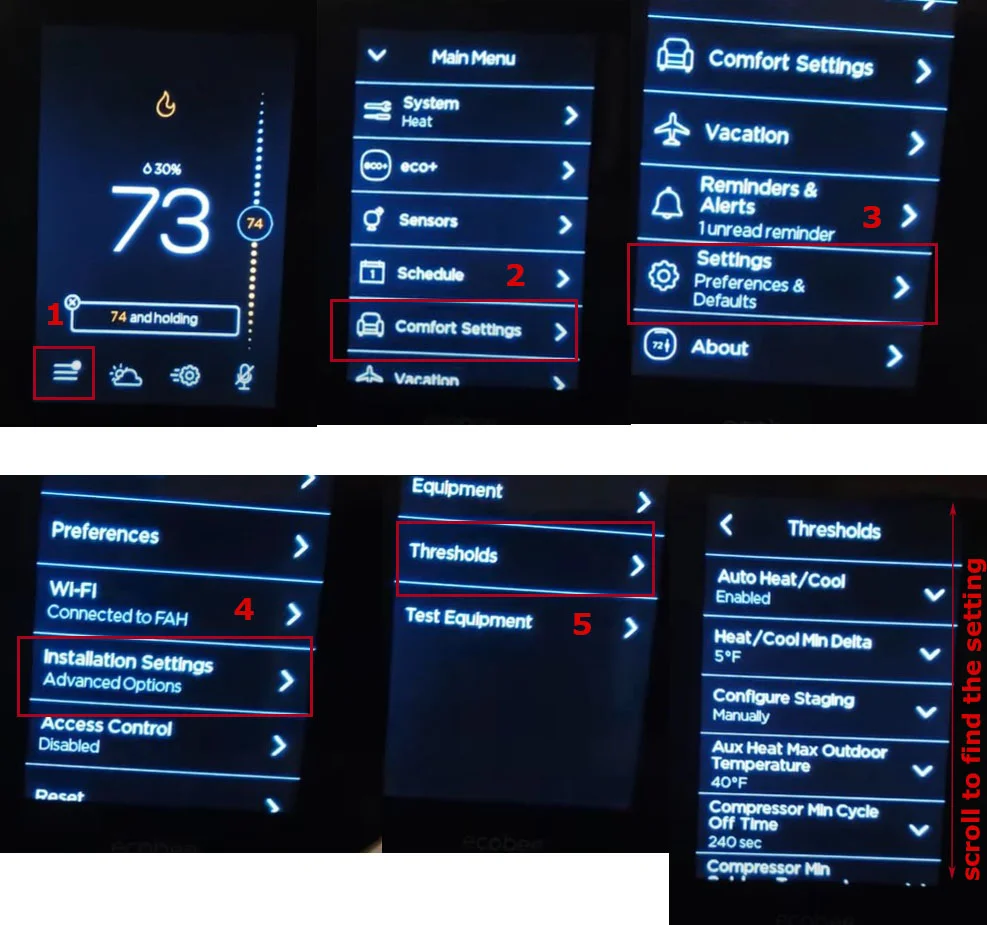Ecobee is a leading brand in the world of smart thermostats. With features like remote control, energy monitoring, and voice activation, the Ecobee has become popular for homeowners looking to save money on their energy bills. One of the most important features of an Ecobee thermostat is its ability to switch to emergency heat mode. Emergency heat mode is a setting that can be used when the temperature outside drops too low for the heat pump to work effectively. So you should discover what it is and how to turn it on.
What is emergency heat?
Emergency heat is a feature found on many HVAC (heating, ventilation, and air conditioning) systems designed to be used in extreme weather conditions when the primary heating source, such as a heat pump, cannot keep up with the heating demand.
A typical HVAC system’s primary heating source is a heat pump, which transfers heat from the outdoor air into your home. However, when the temperature outside drops below a certain level, the heat pump may struggle to meet the heating demand. This is where emergency heat comes in.
Emergency heat is a backup system designed to kick in when the primary heating source cannot meet the heating demand. It typically has an electric resistance heating element that can provide heat even in extremely cold temperatures.
When emergency heat is activated, the HVAC system switches from using the heat pump to the auxiliary heating source. This allows your home to continue to be heated, even when the temperature outside is very low. However, it’s important to note that emergency heat is less efficient than the primary heating source, so it should only be used when necessary.
How to enable emergency heat on Ecobee?
In Ecobee thermostats, so-called thresholds are responsible for activating emergency heating. These are the temperatures or conditions at which extra heat turns on. So lower the thresholds if you need to turn on the emergency heating.
To access the threshold settings on your Ecobee thermostat and manage your auxiliary heat settings, follow these steps:

- Tap the three horizontal lines on your thermostat interface to access the Main Menu.
- Scroll down and select Settings.
- Choose Installation Settings.
- Then select Thresholds.
Once you’re in the Thresholds section, there are three ways you can manage your auxiliary heat system:
- Adjust the ‘Compressor to Aux Temperature Delta‘: This setting allows you to choose the temperature difference between your actual and desired room temperatures. Once this difference is exceeded, the supplemental heating system will start working to warm up your home.
- Change the ‘Compressor Min Outdoor Temperature‘: Your HVAC system’s compressor won’t operate when the outdoor temperature falls below the level you set. This feature can help you save energy and prevent your system from overworking.
- Manage the ‘Aux Heat Max Outdoor Temperature‘: This setting allows you to choose the maximum outdoor temperature at which your auxiliary heat will work. Once the temperature exceeds this number, your supplemental heating system will stop working, helping you save energy and preventing your system from overworking.
By managing your auxiliary heat system settings on your Ecobee thermostat, you can ensure that your home stays warm and comfortable during cold weather while saving energy and keeping your energy bills low.
When should you use emergency heat?
Emergency heat should be used only in extreme weather conditions when the primary heating source, such as a heat pump, cannot keep up with the heating demand. This typically occurs when the temperature drops below a certain level, and the heat pump can no longer extract enough heat from the outdoor air to keep your home warm.
Emergency heat is less efficient than primary heating, so it should only be used when necessary. It’s important to note that running emergency heat for an extended period of time can result in higher energy bills and potential damage to the HVAC system.
It’s also important to understand that emergency heat is a backup system and should not be used as a primary heating source. If you use emergency heat frequently, it may be a sign that your HVAC system needs maintenance or repairs.
Overall, emergency heat should only be used as a last resort when the primary heating source cannot keep up with the heating demand, and you should switch back to the primary heating source as soon as the weather conditions improve.
Why you should not use emergency heat often
Emergency heat should not be used often because it is less efficient and more expensive than the primary heating source. When the emergency heat setting is activated, it bypasses the heat pump. It uses electric resistance heating to warm up your home, which consumes more energy and can result in higher energy bills.
Using emergency heat frequently can also strain your HVAC system, which can lead to wear and tear on the system and potentially result in costly repairs. In addition, relying on emergency heat as a primary heating source can shorten the lifespan of your HVAC system, as it is not designed to be used for extended periods of time.
It’s important to note that emergency heat is intended to be a backup system and should only be used in emergency situations when the primary heating source is unable to keep up with the heating demand. If you use emergency heat frequently, it may be a sign that your HVAC system needs maintenance or repairs.



